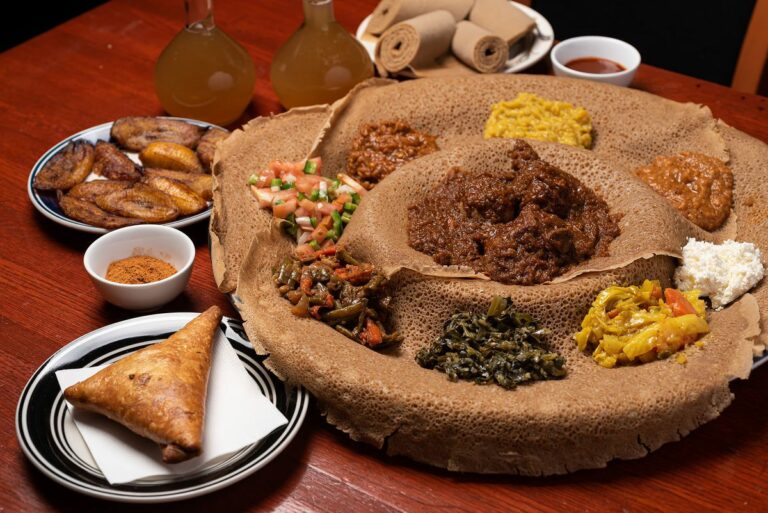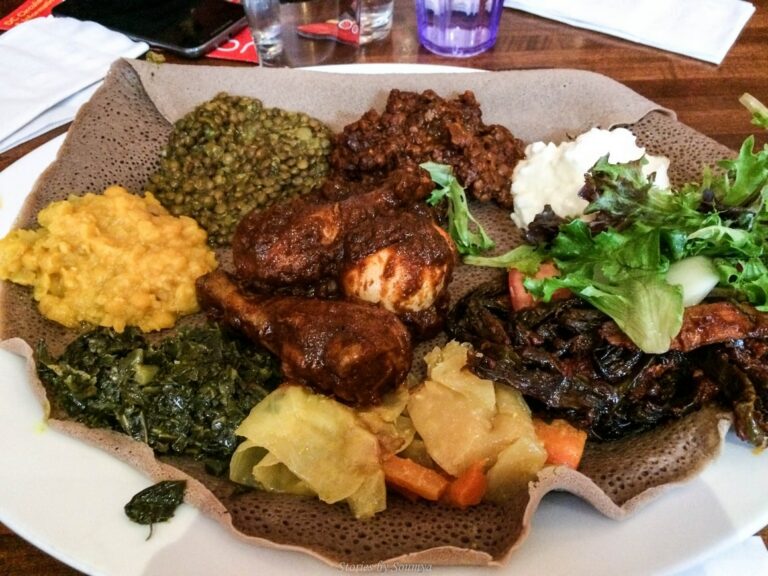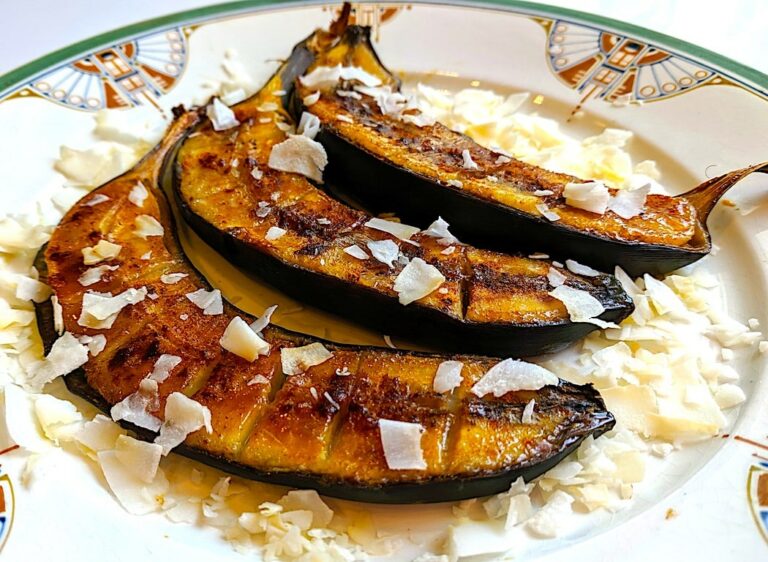Introduction: Ethiopian Cuisine
Ethiopian cuisine is a unique and varied culinary tradition with a rich history. It is characterized by its use of spices and herbs, which bring complex flavors and aromas to the dishes. Ethiopian cuisine is also known for its communal dining experience, with dishes served on large platters and shared among diners using injera, a sourdough flatbread, as a utensil.
The Role of Spices in Ethiopian Dishes
Spices are a fundamental aspect of Ethiopian cooking. They play a crucial role in adding depth and complexity to the dishes. Ethiopian cuisine features a range of spices, including cumin, coriander, cardamom, fenugreek, ginger, garlic, and turmeric. The addition of these spices adds a distinct flavor and aroma to the dishes, making them unique and flavorful.
The Most Common Spices in Ethiopian Cooking
Ethiopian cuisine relies heavily on a few key spices, which are used in a variety of dishes. One of the most commonly used spices is berbere, a fiery spice blend made from chili peppers, garlic, ginger, and a variety of other spices. Another important spice is mitmita, a blend of chili peppers, cardamom, and other spices. Other staples include cumin, coriander, and turmeric. These spices are used in various combinations, creating unique and flavorful dishes.
Heat Levels in Ethiopian Dishes
Ethiopian cuisine features a range of heat levels, from mild to extremely spicy. The heat levels are often determined by the addition of chili peppers and other spices. Dishes such as doro wat, a spicy chicken stew, and kitfo, a minced beef dish, are known for their heat. However, many Ethiopian dishes are not necessarily spicy, and there are plenty of milder options available.
Regional Differences in Spice Usage
Spice usage can vary across Ethiopia’s different regions. In some regions, such as the north, spices are used more sparingly, while in other regions, such as the south, spice usage is more liberal. Additionally, some regions may use unique spice blends or herbs in their dishes, creating distinct regional flavors.
Balancing Spices in Ethiopian Cooking
Balancing spices is an essential aspect of Ethiopian cooking. Too much spice can overpower the dish, while too little can result in a bland taste. Ethiopian chefs carefully blend spices to create balanced flavors that complement the dish’s ingredients. This balance is especially important in dishes such as wot, a stew made with meat or vegetables, which relies heavily on spice blends for its flavor.
Accompaniments to Ethiopian Spicy Dishes
Ethiopian cuisine offers various accompaniments to complement spicy dishes. Injera, the sourdough flatbread, is a staple in Ethiopian cuisine and is often used to scoop up stews and curries. Other traditional accompaniments include ayib, a tangy cheese-like substance, and timatim selata, a tomato and onion salad.
Conclusion: Spicy and Flavorful Ethiopian Cuisine
In conclusion, Ethiopian cuisine is a flavorful and unique culinary tradition that relies heavily on spices to create complex flavors. While some dishes can be spicy, there are plenty of milder options available. Balancing spices is crucial in Ethiopian cooking, and the use of accompaniments such as injera and ayib adds to the communal dining experience. Ethiopians are proud of their cuisine, which has become increasingly popular worldwide, and is a must-try for food lovers looking for something bold and flavorful.










